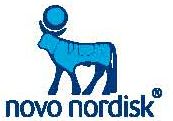Diabetes Watch
Brought to you by

Blueberries and Apples Reduce Diabetes Risk
Consumption of blueberries and apples, which are rich in a subclass of flavonoid called anthocyanins, significantly reduces the risk of developing type 2 diabetes mellitus (T2DM), according to results of a study in the April 2012 edition of The American Journal of Clinical Nutrition. The study, carried out by researchers at Harvard University, prospectively followed more than 200,000 participants in 3 major longitudinal health studies.
The researchers followed 70,359 women in the Nurses’ Health Study (NHS) from 1984 to 2008, 89,201 women in NHS II from 1991 to 2007, and 41,334 men in the Health Professionals Follow-Up Study from 1986 to 2006. All participants were free of diabetes, cardiovascular disease, and cancer at baseline. During 3,645,585 person-years of follow-up, the researchers documented 12,611 cases of T2DM. After adjustment for age, BMI, and lifestyle and dietary factors, they found that a higher intake of anthocyanins was significantly associated with a reduced risk of T2DM, with a pooled hazard ratio of 0.85.
Consumption of blueberries was associated with a pooled hazard ratio of 0.77 for those who consumed 2 or more servings per week compared with those who consumed less than 1 serving per month. Consumption of apples or pears was associated with a pooled hazard ratio of 0.77 for those who consumed 5 or more servings per week compared with those who consumed less than 1 serving per month. No significant association was found between risk of developing T2DM and total flavonoid intake or intake of other flavonoid subclasses.
Helicobacter pylori and Diabetes
Infection with Helicobacter pylori bacteria appears to be associated with reduced blood glucose control in adults, especially among those with higher body mass index (BMI), according to results of a study in the April 15, 2012, edition of the Journal of Infectious Diseases. The study, carried out by researchers at New York University School of Medicine, was based on crosssectional analyses of 2 National Health and Nutritional Examination Surveys (NHANES) carried out a decade apart.
The researchers examined the association between H pylori infection and levels of glycated hemoglobin (A1C) in 7417 participants 18 years and older in NHANES III, conducted from 1988 to 1994, and 6072 participants in NHANES 1999-2000 3 years and older. There was some inconsistency between the 2 data sets, but overall, the researchers found a positive association between H pylori infection and elevated A1C levels among participants 18 years and older who were free of diabetes. In addition, they found a greater increase in A1C associated with H pylori infection among participants with a BMI of 25 or higher. H pylori, which colonizes the stomach, helps regulate leptin and ghrelin, hormones that are involved in energy homeostasis. The bacteria has been associated with beneficial effects early in life (reduced risk of asthma, tuberculosis reactivation, childhood diarrhea, and gastroesophageal reflux disease) but deleterious effects later in life (increased risk of peptic ulcer disease, gastric cancer, and, now, glucose intolerance). The researchers suggest that using antibiotics to eradicate H pylori in older patients may be helpful.
Peer Mentoring Improves Diabetes Control
African American military veterans with diabetes demonstrated significantly improved blood glucose control after being mentored for 6 months by peers who had gotten their diabetes under control. The results of the trial appear in the March 20, 2012, edition of Annals of Internal Medicine.
The trial enrolled 118 African American military veterans aged 50 to 70 years with persistently poor diabetes control, defined as an A1C of 8% or above in the previous 2 measurements. The participants were divided into 3 groups: usual care, in which they were informed of their starting A1C level and given an A1C goal; peer mentoring, in which they were assigned to speak by phone weekly with a mentor whose diabetes was under control, matched by race, sex, and age; and financial incentives, in which they were offered $100 to decrease their A1C by 1% and $200 to decrease it by 2% or to under 6.5%.
The results showed that over 6 months, the average A1C level was reduced from 9.9% to 9.8% in the control group, from 9.8% to 8.7% in the peer mentoring group, and from 9.5% to 9.1% in the financial incentives group. The only group whose A1C reduction was statistically significant was the peer mentoring group.
The researchers chose to open the trial only to African Americans because they are disproportionately affected by diabetes and have lower levels of glucose control and higher rates of resulting complications. Nonetheless, they note that peer mentoring has potential as a low-cost method for treating other patients with persistently poor diabetes control.
Fast Fact: According to the World Diabetes Foundation, the number of people in the world with diabetes is expected to grow to 438 million by 2030.

